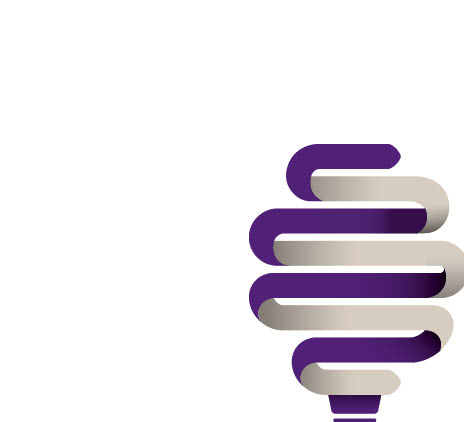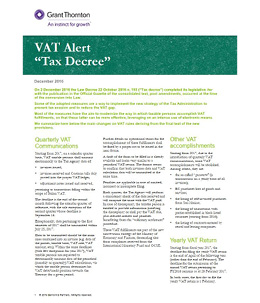-
Transactional advisory services
Find out more about the transactional advisory services of Grant Thornton Financial Advisory Services
-
Valuations
Find out more about the valuations services of Grant Thornton Financial Advisory Services
-
Mergers and acquisitions
Find out more about the merger and acquisition services of Grant Thornton Financial Advisory Services
-
Forensic and investigation services
Find out more about the forensic and investigation services of Grant Thornton Financial Advisory Services
-
Recovery & reorganisation
Find out more about the Recovery & reorganisation services of Grant Thornton Financial Advisory Services
-
Business risk services
Find out more about the business risk services of Grant Thornton Financial Advisory Services
-
Business consulting
Find out more about the business consulting services of Grant Thornton Financial Advisory Services
-
Capital market
Capital market
-
Corporate and business tax
Find out more about our corporate and business tax services.
-
Direct international tax
Find out more about our direct international tax services.
-
Global mobility services
Find out more about our global mobility services.
-
Indirect international tax
Find out more about our indirect international tax services.
-
Transfer pricing
Find out more about our transfer pricing services.
-
Litigation
Our lawyers and accountants can manage all defense measures provided not only by the Italian law, but also by EU regulations and conventions
-
Family business
Find out more about our Family business services.
-
Legal
The client can be assisted in every need and with the same care both on important operations or disputes and on simple matters

-
Back office outsourcing
Find out more about our Back office outsourcing services
-
Business process outsourcing
Find out more about our business process outsourcing services.
-
Compilation of financial statements
Find out more about our compilation of financial statements services.
-
Tax compliance
Find out more about our tax compliance services.
-
Electronic invoicing
Find out more about our electronic invoicing services
-
Electronic storage
Electronic storage is an archiving procedure that guarantees the legal validity of a digitally stored electronic document
-
Revaluation of corporate assets
Find out your civil and fiscal revaluation of tangible, intangible and financial assets
-
Payroll
Complete and customized payroll service, integrated with digital solutions and compliant with Italian and international regulations.
-
Labor consultancy
We help Italian and international companies manage all aspects of their workforce.
-
HR & Payroll Advisory Services
We review contracts, payroll, and risks for extraordinary transactions and we assess tax, labor, and safety risks in outsourcing contracts.
-
Extended services
We provide integrated digital tools to simplify HR management.
-
HR Infinity Portal
The HR Infinity Portal is Zucchetti’s platform designed to centralize communication between the company and its employees.
-
Cybersecurity
GT Digital helps clients structure information security management internal functions, also through partially or totally outsourced functions
-
Agile and Programme Management
GT Digital provides support in the adoption and implementation of different portfolio management
-
Robotic Process Automation
Our “BOT Farm” can rely on digital workers able to help clients in routine activities, allowing employees to deal with more added-value activities
-
Data strategy and management
GT Digital can support clients in seizing the opportunities offered by Big Data, from the definition of strategies to the implementation of systems
-
Enterprise Resource Planning
We support clients in selecting the most appropriate ERP System according to their specific needs, helping them also understand licensing models
-
IT strategy
GT Digital supports clients in making strategic choices, identifying innovation opportunities, comparing themselves with competitors
-
IT service management
We can support with software selection and with the implementation of dedicated tools for the management of ICT processes
-
DORA and NIS 2
The entry into force of the DORA Regulation and NIS2 represents a major step towards the creation of a harmonised regulatory framework
On 2 December 2016 the Law Decree 22 October 2016 n. 193 (“Tax decree”) completed its legislative iter with the publication in the Official Gazette of the consolidated text, post amendments, occurred at the time of the conversion into Law.
Some of the adopted measures are a way to implement the new strategy of the Tax Administration to prevent tax evasion and to reduce the VAT gap.
Most of the measures have the aim to modernize the way in which taxable persons accomplish VAT fulfillments, so that these latter can be more effective, leveraging on an intense use of electronic means.
We summarize here below the main changes on VAT rules deriving from the final text of the new provisions.
Quarterly VAT Communications
Starting from 2017, on a calendar quarter basis, VAT taxable persons shall transmit electronically to the Tax Agency data of:
- invoices issued,
- invoices received and Customs bills duly posted into the proper VAT ledger,
- adjustment notes issued and received,
pertaining to transactions falling within the scope of Italian VAT.
The deadline is the end of the second month following the calendar quarter of reference, with the sole exception of the second quarter whose deadline is September 16.
Exceptionally, data pertaining to the first semester of 2017 shall be transmitted within July 25, 2017.
Data to be transmitted should be the main ones contained into an invoice (e.g. data of the parties, taxable basis, VAT rate, VAT amount, etc.). Within the same deadlines (with few exceptions for year 2017), VAT taxable persons are requested to electronically transmit data of the periodical (monthly or quarterly) VAT calculations, via which the taxable person determines his VAT debt/credit position towards the Treasury for a given period.
Further details on operational terms for the accomplishment of these fulfillments shall be fixed by a proper act to be issued in the near future.
A draft of the form to be filled in is already available and looks very similar to a periodical VAT return. The format seems to confirm that both invoices data and VAT calculation data will be transmitted at the same time.
Penalties are applicable in case of omitted, incorrect or incomplete filing.
Each quarter, the Tax Agency will perform a consistency check of the data received and will compare the same with the VAT paid. In case of discrepancy, the taxable person is entitled to provide information justifying the discrepancy or shall pay the VAT due, plus reduced interest and penalties benefitting from the “voluntary settlement” procedure.
These VAT fulfillments are part of the new anti-evasion strategy of the Ministry of Economy and Finance, descending also from complaints received from the International Monetary Fund and OCSE.
Other VAT accomplishments
Starting from 2017, due to the introduction of quarterly VAT communications, some VAT accomplishments will be abolished. Among others, they are:
- the so called “spesometro” (a transmission on a yearly basis of all invoices);
- EC purchases lists of goods and services;
- the listing of self-invoiced purchases from San Marino;
- the listing of transactions with parties established in black listed countries (starting from 2016);
- the listing of contracts entered by rental and leasing companies.
Yearly VAT Return
Starting from fiscal year 2017, the deadline for filing the yearly VAT return is the end of April of the following year (rather than the end of February). The deadline for the submission of the annual VAT return pertaining to FY2016 remains as at 28 February 2017.
In both cases, the first day to file the yearly VAT return is 1 February.
VAT refunds
A request for refund of a VAT credit must normally be “granted” via a certification of conformity released by a tax advisor or similar (“visto di conformità”) or via the filing of a guarantee in favor of the Tax Authorities.
These fulfillments are not requested for small VAT refunds. The threshold of such small VAT refunds has been increased from 15,000 EUR to 30,000 EUR, starting from 2017.
VAT warehouse
Starting from 2017, simplifications granted under the VAT warehouse regime have been extended to any type of goods (irrespectively from their provenance and category) and any type of business purchaser (Italian, EU, non-EU).
With the purpose to prevent VAT frauds and VAT evasion, amendments pertain also to the way in which VAT is applied at the time of the withdrawal of goods that remain in Italy.
For national goods existing in the VAT warehouse, VAT shall be paid in cash by the taxable person, within the 16th day following the month of the withdrawal, via the warehouse keeper who becomes jointly liable. Such VAT to be paid cannot be offset with VAT credits, but can be not charged, benefitting from the “usual exporter” scheme, if the related conditions are met.
The same regime applies for non-EU goods introduced in the VAT warehouse in free circulation until a proper decree, regulating the application of VAT via the reverse charge mechanism upon the granting of a guarantee, will be enacted.
Rules for goods introduced into the VAT warehouse due to an intra-EU purchase remain unchanged (VAT is applied under the reverse charge mechanism).
From the above described amendments it comes that the taxable person who withdraws the goods from the stock is no more requested to be registered with the Chamber of Commerce, to demonstrate to be actually an operative business and to provide evidence that he regularly pays VAT due.
Cancellation of dormant VAT id. numbers
Starting from 2017, the Italian Tax Agency will cancel the VAT identification number of those subjects who, based on information in the hands of the Agency, qualify as “dormant”, having performed no activities in the three previous FYs. Operational terms regulating the cancellation procedure and communications with the taxable person shall be fixed by a proper act to be issued.
E-invoicing
For those taxable persons who opts for the e-transmission of invoices and/or tills, the statutory of limitation period has been reduced from 5 to 3 years.
Tax Free shopping
Starting from 2018, invoices for sale of goods - for an amount higher than 154,94 EUR - to be brought in the personal luggage of travelers, issued towards non-EU private individuals shall mandatorily be e-invoices.
Proper rules will be enacted to simplify ways and content of such e-invoices and to grant the necessary integration with the Customs procedure OTELLO.


